Have you ever watched a bird try to fly against a strong headwind, pumping its little wings furiously in an effort to move forward, only to be slowly blown backwards, or at the very least, staying stationary, stuck in a sort of avian limbo?
I always feel bad for those birds when I see them.
It’s sort of the same feeling I get watching the Baltimore Orioles try to run.
You don’t hear much about speed when it comes to the Orioles, and when you do, it’s in the form of fans bemoaning the team’s lack of it. The Orioles are regularly at the bottom of the league in stolen bases. They have now finished dead last in the category in four consecutive seasons – in 2014 and 2015, they stole 44 bases each season, bottomed out at 19 in 2016 (with the next lowest team swiping 35 bags), and then “rebounded” back to 32 last season (every other team stole at least 53). Basically, since Brian Roberts and Nate McLouth departed (and Manny Machado had his one season where he stole some bases), the stolen base has not been a part of the Birds’ game.
(Paradoxically, Buck Showalter, while completely shunning the stolen base for his own team, puts a huge emphasis on slowing down the running game defensively, which some argue has hindered the development/performance of both pitchers and catchers in Baltimore. Alas, that’s a story for another day…)
It’s been a source of much frustration among O’s fans, as when the team goes into their lineup-wide slumps where they are corkscrewing themselves into the ground one after another, it seems that Buck has no interest – or ability – to change up the approach and try to manufacture some offense. Of course, it’s hard to argue too much with the results; in the years listed above (2014-2017), the O’s made the postseason in two of four seasons, and also won their only division title since 1997. Perhaps there was the potential to squeeze out another win or two during those seasons with some “small ball.” Perhaps not. Who can say, really?
The bottom line is that the Orioles, as a team, are SLOWWWWWW, and they don’t care. Today, I wanted to take a look at the “fastest” and slowest Orioles from 2017, as well as new guys joining the 2018 team. To do this, I’m using sprint speed from Baseball Savant (Statcast data). Some more info:
Sprint Speed is Statcast’s foot speed metric, defined as “feet per second in a player’s fastest one-second window.” The Major League average on a “max effort” play is 27 ft/sec, and the max effort range is roughly from 23 ft/sec (poor) to 30 ft/sec (elite). A player must have at least 10 max effort runs to qualify for this leaderboard.
First, let’s talk about the team’s overall lack of speed. As noted above, the average Major League player gets up to a speed of 27 ft/sec during a “max effort” run. We can then look at each team and see how many players they have who fall on either side of this average.

Yup, there’s our O’s, with the fewest players above “average” MLB speed. (Note: Anybody else find it funny that the “Athletics” are the second-least athletic team in baseball?)
I’m not saying there is any correlation between having an average number of fast vs. slow guys. A quick glance sees that the LCS teams from 2017 (Yankees, Astros, Dodgers, and Cubs) all had between 50% and 64% of their guys clock in at above average. In fact, 23 of the 30 teams are between 46% and 67% of players sprinting at above average velocities. The outliers are the White Sox & Padres on the high end (67 and 71 wins, respectively), and the Orioles, Athletics, Brewers, Blue Jays, & Reds on the other end (three last-place teams, a fourth-place team, and then Milwaukee, who won 86 games and just missed the NL’s second wild card spot). The quick-and-dirty conclusion is that you probably want to be somewhere near the middle there.
Again, I’m not trying to make some overarching point about ideal roster construction when it comes to speed. I’m just presenting some figures that I found interesting. Draw your own conclusions (and let me know what they are!)
Moving on, let’s focus on which O’s were the tortoises and which were the few hares last season.
2017’s Fastest Orioles
Craig Gentry – 28.5 feet per second
Gentry, the Orioles’ (ugh) secret weapon, actually had the fifth fastest such time among all MLB right fielders. Despite being the third-oldest Oriole listed (behind J.J. Hardy & Seth Smith), Gentry still has his legs.
Joey Rickard & Tim Beckham – 27.5 ft/sec
Rickard, though he has a “speedy” reputation, came in a whole foot per second slower than Gentry, and just 31st among right fielders. Beckham was 32nd among shortstops, and would have been 16th among third basemen.
Adam Jones – 27.1 ft/sec
Jones’ sprint speed was 60th (!!) among MLB centerfielders, lending more ammo to those who hold the idea that it’s time for him to move to a corner outfield spot. Since we all know that’s not happening, this is a bit disturbing, and doesn’t bode well for the team’s OF defense in 2018.
However…
Colby Rasmus – 27.4 ft/sec
Alex Presley – 28.0 ft/sec
Rasmus would have been just ahead of Jones for third on the Orioles. He is considered a good defender, so having him to Jones’ left (in right field) will certainly have a positive peripheral effect on Jones. Presley, who probably has a decent shot of being on the 25-man at some point this season, would have been second on the team.
In addition, we don’t have data for either Austin Hays or Anthony Santander, two other guys who will likely spend time in the Birds’ outfield this season.
The league average, as noted above, is 27 ft/sec. Of the 14 Orioles clocked, all but the above four players come in right at or below that figure. So, who really pulled up the rear?
2017’s Slowest Orioles
Mark Trumbo – 26.3 ft/sec
This is not a result of too many home run trots bringing down his average. Zing.
J.J. Hardy – 26.2 ft/sec
I’d have guessed Hardy was the slowest non-catcher. The guy actually holding that title? Stay tuned…
Caleb Joseph & Welington Castillo – 25.8 & 25.1 ft/sec
Big deal, right? Catchers are supposed to be slow. O’s catchers, however, were slow even by backstop standards, coming in at 33rd and 48th, respectively.
Chris Davis – 25.0 ft/sec
The Big Fella has become more like “The Big Slow” lately. He was 45th of 48 first basemen clocked, finishing ahead of only Jesus Aguilar, Justin Smoak, and the corpse of Adrian Gonzalez.
(Of course, we can’t mention Davis and Gonzalez in the same sentence without….)

This is a new development for Davis though, right? We all remember being surprised by his athleticism for such a large dude a few years back. Unfortunately, we only have data going back to 2015, but even based on that, we can indeed see a big decline in Davis’ (already plodding) footspeed last year:
2015: 26.2 ft/sec (Only Joseph & Matt Wieters were slower)
2016: 26.2 ft/sec (Hyun-soo Kim, Hardy, Pedro Alvarez, Joseph, & Wieters were slower)
So Davis lost 1.2 ft/sec of sprint speed between 2016 and 2017, and that 25.0 number would have been the slowest on the team in both 2015, and 2016 (when he would have been tied with Wieters, who went from 25.1 in ’15 to 25.0 in ’16).
Not that you need something else about which to complain when it comes to Davis, but were you so inclined, feel free to pile on with “he’s as slow as damn molasses too!”

GulfBird Sports/Craig Landefeld
Manny Machad-Slow?
One name conspicuously absent from the Orioles’ list of above-average sprinters is Manny Machado. It’s tough to say what’s going on with Manny. Earlier we mentioned that Gentry has kept his speed into his mid-30’s. Is Machado having an issue doing the same into his mid-20’s?
Here are Manny’s numbers for the past three seasons:
2015: 27.7 ft/sec
2016: 26.6 ft/sec
2017: 27.0 ft/sec
His last knee surgery came during the 2014-15 offseason, so if anything, you’d expect his speed to have been down in 2015, then to increase a bit as he continued to build up his leg strength. 2015 though, was the year he stole 20 bases and put up his fastest speeds for which we have data. Unfortunately, we don’t have data for prior years. It would be nice to see, for instance, Machado’s sprint speed from 2012, before his first major knee injury.
Either way, without a bounceback in speed, Manny is now just league average in that area. As far as shortstops go, he’d have been just 40th in MLB last year. Not that shortstops ever have time to work up to a full sprint in getting to batted balls. Again, I’m just throwing it out there.
None of this is “good” or “bad.” There are plenty of ways to win baseball games. The Baltimore Orioles, under Dan Duquette and Buck Showalter, have decided that they want a bunch of “big, hairy guys” – who just also happen to be quite slow – to mash balls out of the park. That’s certainly served them well more often than not over the past half-decade or so.
Still, while I knew how little they cared about stealing bases, even I was surprised to see just how slow they are, based on the Statcast data. It’ll be interesting to keep an eye on in 2018, though I don’t expect much to change in respect to average team speed, nor to number of bags swiped.


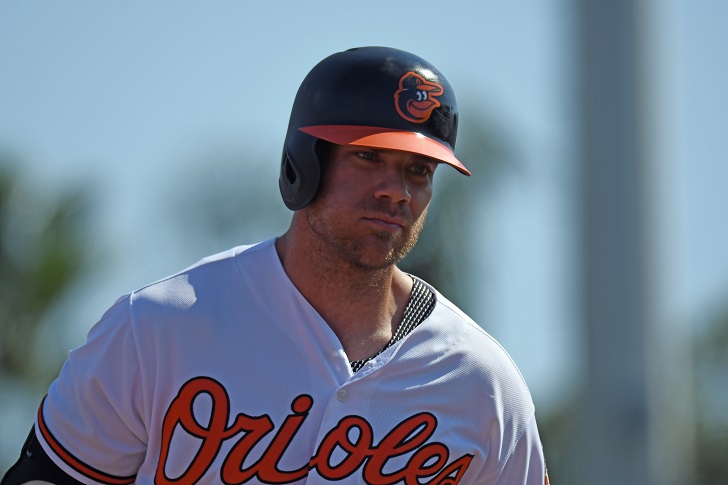

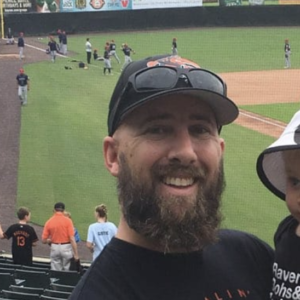
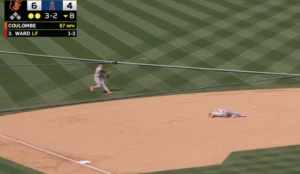

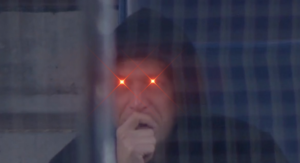
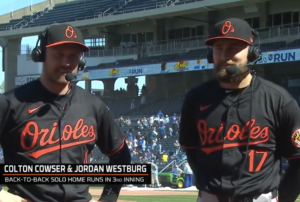
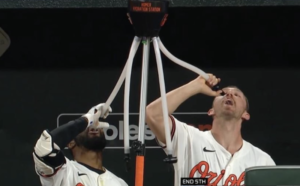

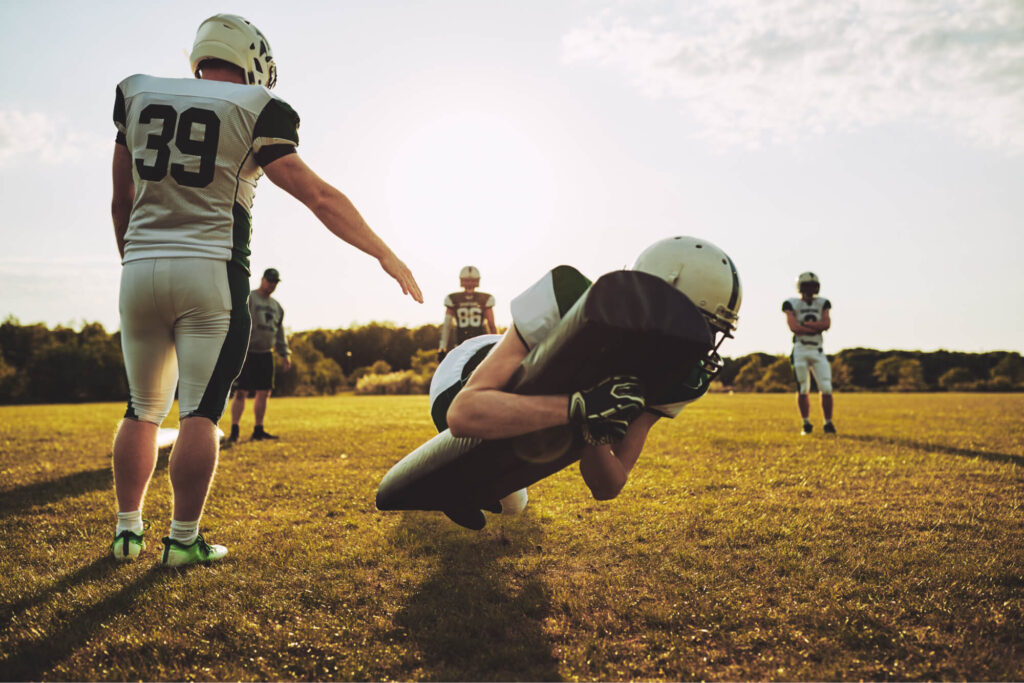
0 Responses
Who needs to run fast it’s all about the home run trot. Just ask Buck or Dummy Dan.